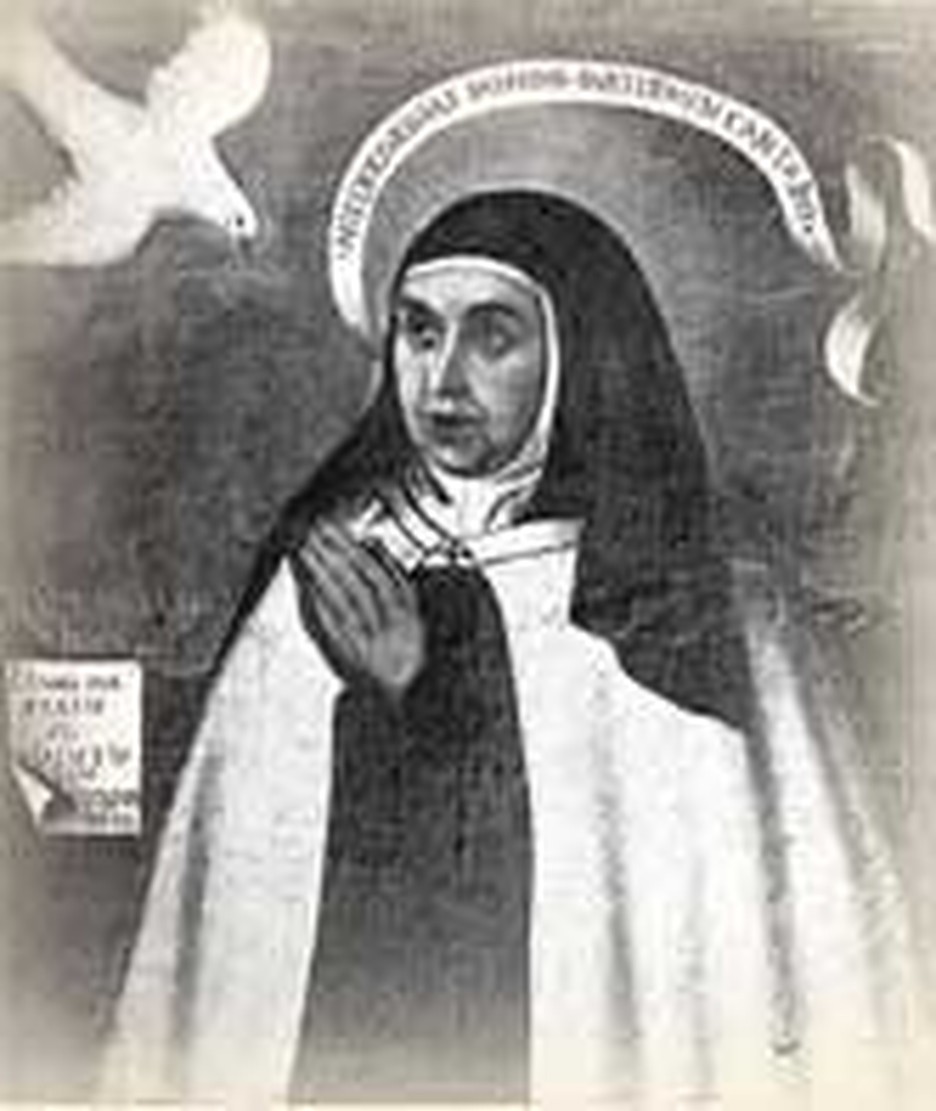
Avila sits almost exactly in the heart of Spain. Teresa, who was born in 1515, was molded by the throb of this most fiercely Catholic of European nations. The passion of Spain with its romances, saints, conquistadors, and knights appealed to the headstrong girl. The Moors still held bastions of power. As a child, perhaps only five, she talked her older brother into sneaking out of town with her, determined to enter Moorish territory and become martyrs for Christ. An uncle found them and brought them back. Later she ran away to a nunnery. Reading St. Jerome, she had been swayed to long for a deeper, more austere life. But as she herself admitted, she came to the nunnery less for love of Christ than hope of a quick entrance into heaven.
While still young and new to the nunnery, she became seriously ill. No remedy worked. After several years of worsening health, she fell into a coma and was thought by the sisters to be dead. They would have been buried her had not her father forbidden it, swearing life still remained in her. For four days she was unconscious, waking to severe pain and paralysis. Only after three years of suffering did she regain the full use of her legs.
In the convent she found herself frittering her life in chatter. While teaching others to pray, she found she herself could not commune with the Lord for a long time because she felt herself a hypocrite, living a life displeasing to the Lord. Aware of the frivolity of her course and its baneful effect on her prayer life, she groped closer to Christ. She began to see visions. Some attributed them to demons. Others encouraged her to trust them. During this time she mentored the ecstatic mystic, St. John of the Cross. Together they are the founders of the discalced (shoeless) Carmelites.
Teresa was no idle visionary, however. Practical at heart, she became a leader of reform in the Carmelites and founded many nunneries dedicated to a deeper walk with Christ. No one was to enter these houses except women devoted to spiritual living. Other nunneries were places to deposit women who had no other home. Heavy managerial duties fell on Teresa. It was a struggle to find enough for her nuns to eat; their living conditions were sometimes deplorable. Teresa did her best to overcome these limitations. In addition she wrote religious and meditative books. One, her autobiography, she wrote at her superior's order. Other titles are Way of Perfection and Meditations on the Canticle. She transcended the ideas of love she had imbibed from romances as a child. "...Real love of God does not consist in tear-shedding nor in that sweetness and tenderness for which we usually long...but in serving God in justice, fortitude of the soul and humility."
Her mystical writings won her enduring fame. On this day, July 18, 1970, Pope Paul VI stated that he was going to name Teresa of Avila the first ever woman doctor of the church. He officially did so some months later and she took her place beside such great names as St. Augustine and St. Jerome.
Bibliography:
- Eerdman's Handbook to the History of Christianity. Editor Tim Dowley. Berkhamsted, Herts, England: Lion Publishing, 1977.
- Hamilton, Elizabeth. The Life of St. Teresa of Avila. Westminister, Maryland: Christian Classics, 1982.
- "Religion." World Topics Year Book, 1970.
- Zimmerman, Benedict. "St. Teresa of Avila." The Catholic Encyclopedia. New York: Robert Appleton, 1914.
Last updated April, 2007.
_639003522088907085.jpg)

